By Tom Anderson & Therezia Cooper
Corporate Watch’s new briefing exposes how the Israeli economy profits from the siege of health services in Gaza and highlights calls from Palestinian health workers to boycott Israeli pharmaceutical companies.
Buy the briefing | Read the briefing online | Download a PDF of the briefing
Overview
The Israeli siege of the Gaza Strip prevents the proper functioning of Palestinian health services and the effective treatment of sick patients. At the same time the Israeli economy, and particularly Israeli pharmaceutical and transport companies, benefit from the captive market provided by a population living under occupation.
In summary, the interviews below show that the Israeli siege is detrimental to health services in Gaza in the following ways:
- Health services, health workers and their patients are subject to direct military attacks.
- Health services have a shortage of medicines, fuel, medical equipment and spare parts as a result of the siege.
- Sick patients are often prevented from travelling outside Gaza to obtain treatment.
- The fuel shortage means that some services have been reduced and it puts a financial strain on health services, which have to run on generators. Patients are put in danger by the fuel shortage.
- The fuel shortage results in injuries caused by people undertaking risky tasks in the dark and by fires caused by candles.
- Health workers are often unable to go abroad to receive training and foreign delegations are unable to enter Gaza, isolating the services from the rest of the world.
- The shortage of clean water, partly caused by the siege, has had a detrimental effect on people’s health.
- The economic effects of the siege have had a knock-on effect on how much money people can spend on their health.
The interviews uncover the following ways that the Israeli economy benefits from the siege of health services in Gaza:
- Israeli pharmaceutical companies benefit from the captive market created by the siege.
- Revenue is created by the transport of goods through Israel to Gaza – Since the closure of the tunnels from Egypt, and because of the almost complete closure to goods of the Rafah crossing from Egypt, all medicines and supplies to health services in Gaza must enter through the Karam Abu Salem crossing from Israel (the crossing is known as Kerem Shalom in Israel). This benefits Israeli transport companies, which transport the goods through Israel to the crossing.
- Health services in Gaza are required to pay for the storage of equipment in Israel while it undergoes lengthy Israeli security checks, often taking many months.
- Since the closure of the tunnels Israeli companies have supplied all fuel used in Gaza.[1] Since the fuel crisis health services have been forced to buy fuel to run generators in order to keep services running.
- Many patients from Gaza who cannot receive the treatment they need in the Strip have to receive treatment in Israel. This treatment is paid for by the Palestinian Authority while families of sick patients pay for transport and accommodation in Israel. This includes patients who have been injured in attacks by the Israeli military.
The health workers we interviewed had important messages to convey to the international movement for boycott, divestment and sanctions against Israeli state policies. The last part of this article follows their calls for international action.
The interviews
Corporate Watch researchers visited Gaza during November and December 2013 and interviewed health workers from the Union of Health Work Committees (UHWC),[2] the Palestinian Medical Relief Society (PMRS),[3] and the Palestinian Red Crescent Society (PRCS),[4] as well as a representative of the Ministry of Health (MOH) In Gaza.[5]
This article highlights the problems that Palestinian health workers face when carrying out their work under siege and details the ways that the Israeli economy benefits from the situation.
The health services
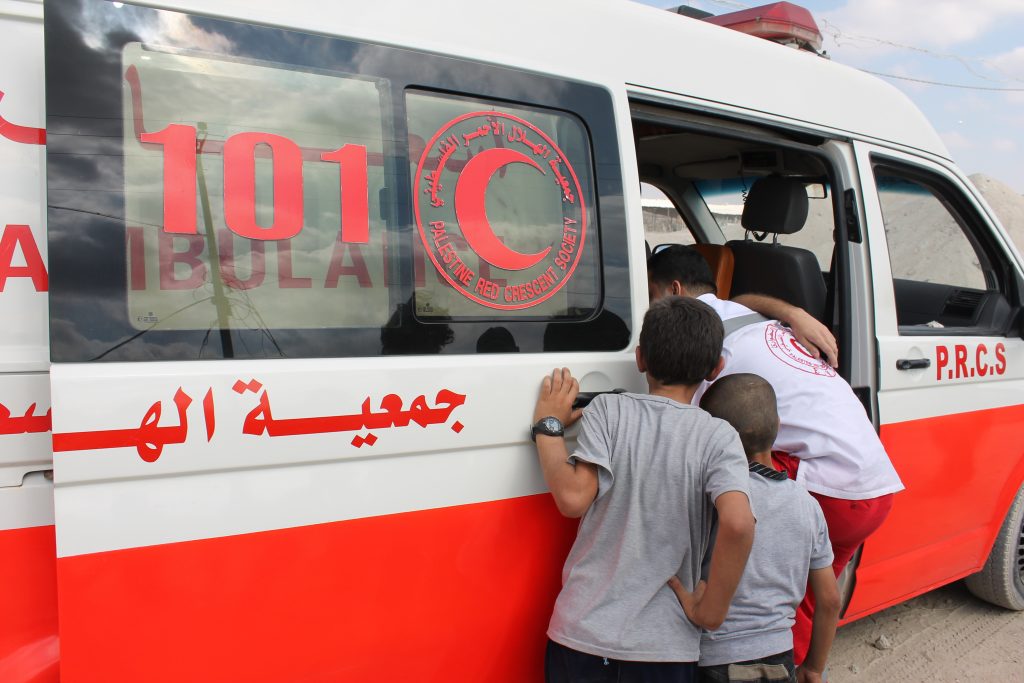
PRCS medics help a demonstrator suffering from teargas inhalation at a demonstration at Nahal Oz checkpoint – September 2013 (photo taken by Joe Catron)
The MOH has over 4000 workers in Gaza and runs 14 government hospitals and 54 health institutions, as well as 80 ambulances. UHWC, established in 1995, is a not for profit, non-governmental health provider with 466 employees and five medical centres across the Strip. UHWC established and provides services in Al Awda hospital.
PMRS is a primary health service provider that has been established for 34 years and has five health centres across the Strip. It runs pharmacies, assisted equipment loan centres and offers physiotherapy services. PRCS was established in 1968 and is a part of the International Red Cross and Red Crescent Movement. It has 4200 employees in the West Bank and Gaza, operates 45 ambulances in Gaza, staffed by 110 paramedics, as well as offering psychosocial services.[6]
Corporate Watch approached the United Nations Relief and Works Agency (UNWRA), which operates healthcare centres and dental clinics for refugees in the Strip. However, the agency refused to meet with us.
A health service under direct military assault…
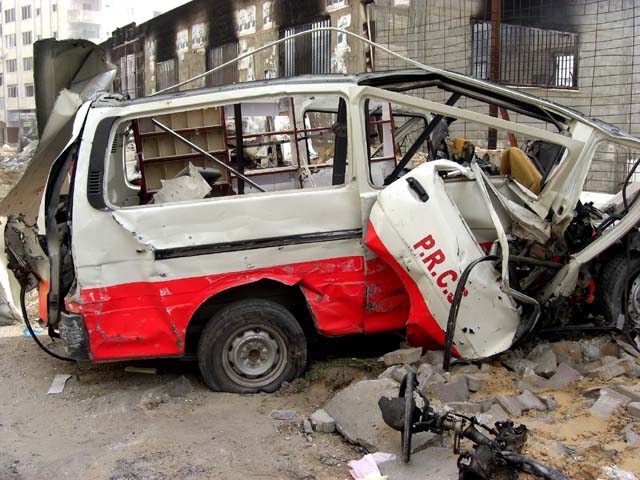
Destroyed Red Crescent ambulance outside the bombed Red Crescent storage and administrative buildings in Tel el Howa, near al Quds hospital, Gaza City.
Most of the health workers Corporate Watch interviewed reported direct attacks by the Israeli military on their workplaces.
Dr Mona El Farra, Deputy Chair of PRCS in Gaza, told us:
“In my experience from 2000 until now, ambulances have been attacked either directly or caught in the crossfire. Israel never respects ambulance drivers. Hospitals have also been attacked. I remember in 2006 Al Awda hospital was caught in a crossfire of tank shells. Flechette ammunition[7] was fired into the hospital. In 2009 [during the Israeli attack known as ‘Operation Cast Lead’] when Al Quds hospital [in Gaza City] was attacked some of the patients were injured. Some of the children from the Samouni family were there. Patients were going from trauma to trauma [21 members of the Samouni family were killed during the bombing of a residential area in 2009].
Schools are not immune to attack. Health workers have been killed despite clear signs that they are working. The Red Crescent building is close to the police headquarters. The size of the bombs dropped on the police HQ meant the ceiling of our building was damaged.
After five to six days of attack we ran out of some supplies, for example blood transfusion bags, intratracheal tubes, equipment for transfusions and medicine for blood pressure, heart disease and asthma. After popular protest some supplies were allowed through the Rafah crossing by the Egyptian government.”
According to Dr Tayseer Sultan of UHWC, in 2009:
“Windows and doors were broken at both Al Awda Hospital and UHWC’s health centre in Beit Hanoun. Arafat Abd Al Dayem,[8] a paramedic working for UHWC, was killed [by an artillery shell] on 4 January 2009 while working on an ambulance. His colleague, Brahim Shabat, who was working in the same ambulance as Arafat, suffered multiple trauma from an attack by an Apache [helicopter]. Our office also had its windows and doors broken. Another of UHWC’s staff was injured in Israel’s November 2012 attacks on the Strip.”
In 2009 health workers from different agencies in Gaza made a call for solidarity that said that during Operation Cast Lead alone “we lost 16 members of our teams, and sustained 57 injuries. 29 of our ambulances were damaged, and 35 health facilities were attacked. Wafa and Al Quds hospitals were directly targeted using white phosphorous.”
…and under siege
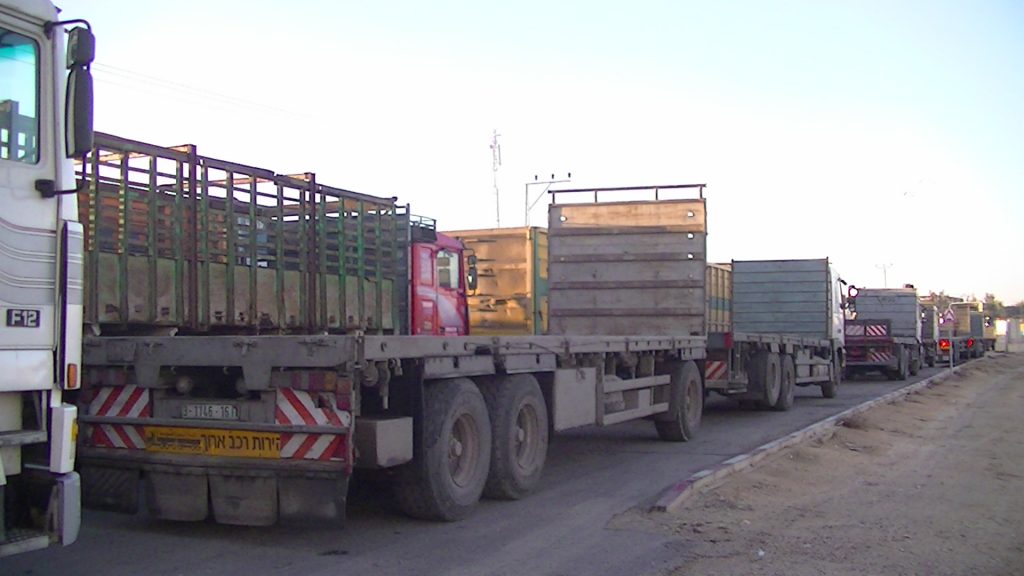
Trucks waiting to go to the Karam Abu Salem crossing to load up with goods which have been transported through Israel to Gaza – November 2013 (Photo taken by Corporate Watch)
Since 2006 Israel has initiated restrictions on movement, closures of crossings into Gaza and restrictions on goods entering the Gaza Strip. These conditions amount to a siege of the Strip, backed-up by US and EU boycotts of the Hamas government and closures of the Rafah crossing by the Egyptian government.
The biggest effect of the siege is on freedom of movement for the people of Gaza. The tight closure makes it extremely difficult for people who need treatment outside Gaza to obtain permits to leave. Patients wanting treatment outside are required to enter Egypt through the Rafah crossing or Israel through the Beit Hanoun (Erez) crossing. Rafah was open only 9 days out of 30 during November 2013.
The Israeli authorities require sick patients to obtain a permit to enter Israel, which is not at all easy, and often force patients to undergo humiliating security checks and arrests at the crossing. These strict controls on patients leaving Gaza are in the context of a health crisis which has been caused by Israeli attacks and by the siege.
The siege prevents the free flow of medicine and medical equipment into Gaza. Medicines are only allowed through the Rafah crossing very occasionally and in exceptional circumstances. For example, in 2009 medical relief was allowed through the Rafah crossing because of the health emergency caused by the Israeli attack, and in 2013 the ‘Miles of Smiles’ solidarity convoy obtained permission to bring medicine and other supplies through the crossing.
Prior to July 2013 medicine was brought through tunnels from Egypt. The MOH told us that 30% of their medicines used to be sourced from the tunnels, while PRCS said that they received 15%. Israel and Egypt have been waging a war against these tunnels and Hamas government sources now claim that no more supplies are coming through.[9] As a result, currently all medicines, medical equipment, fuel and other supplies for health services in Gaza come through the Karam Abu Salem crossing from Israel.
The siege also has long-term effects on the health of people in Gaza. The unemployment caused by the prevention of exports from the Strip, the closure of businesses and construction sites due to the prevention of the entry of raw materials into Gaza, and the uncertainty over whether government workers will receive their salaries caused by the restrictions placed on banks, have caused a deteriorating economic situation, which in turn affects people’s health. Dr Bassem Zaqout of PMRS said:
“The siege affects the economy first of all, but this in turn affects people’s health. People do not have enough money for health needs. For example, they don’t pay for routine checks such as for breast cancer. People don’t have any savings anymore. There is not enough data yet to link the impacts of the siege to chronic illness but I can say that there is an increase in iron deficiency and anaemia. I think that this is linked to people trying to save money and a decrease in the quality of food.”
Patients needing treatment abroad
Some of the most damaging aspects of the siege are the difficulties faced by sick patients needing treatment outside Gaza. Many of the health problems which people are seeking treatment for are direct results of Israel’s military attacks or of the siege itself. The fact that people are unable to obtain suitable treatment is often a result of the siege’s paralysing effect on health services in Gaza.
Dr Tayseer of UHWC told us: “We have chronic emergencies due to Israeli attacks. Many people need reconstructive surgery but due to the siege we cannot give proper treatment. Despite this, many people can’t go abroad for treatment.”
Mohammed Azzam was 15 when he was severely injured in a missile attack by an Israeli drone on his way to school in Gaza City in 2006.[10] Mohammed spoke to Corporate Watch about his journey to Israel to have an operation at Ikhilov hospital: “I went by ambulance through Erez. I was taken out of the ambulance for 30 minutes, left outside on a stretcher. I had had an operation the day before. It was cold, I had had anaesthetic, it was hard.”[11]
Even in cases like this, where the Israeli military is directly responsible for attacks on civilians, the Israeli hospital bill is footed by the Palestinian government, while the family of the patient have to pay other associated expenses. According to Mohammed, “the hospital costs were funded 100% by the PA – my father paid for transportation. It cost 4000 shekels in transport costs.”
Cancer patients are prevented from receiving treatment in Gaza due to the restrictions on equipment and drugs caused by the siege, and often die while waiting for a permit to travel outside for treatment. Because of the siege, several drugs needed for the treatment of cancer are not available in Gaza. Radiotherapy and chemotherapy are not available due to a lack of equipment caused by Israeli restrictions on imports.
Dr El Farra of PRCS told us: “For cancer patients in Gaza there is no chemotherapy. Patients need to be referred to Israel or the West Bank or Egypt. Many patients have died while waiting for treatment, especially if their father or brother has been in the Israeli jails. Rafah crossing is unreliable for these patients. My friend had stomach cancer. He got a permit once to go to Israel but was unable to go again. He died. I know of a 4 year old child who got a permit to go to Israel but their parents didn’t get one – they didn’t go and the child died. 900 patients have died while waiting for treatment.” According to Dr El Farra, one of the things they are affected by is “the stress of waiting itself.”
Creating a shortage of medicine in Gaza and a captive market for Israeli pharmaceutical companies
During the 1990s, a series of economic agreements between the Israeli government and the Palestinians, all of which related to the so-called Oslo ‘peace process’, were signed. These agreements, which masqueraded as ‘peace’ accords, were in fact an exercise in consolidating Israeli colonial domination of the West Bank and Gaza Strip. The most significant of these was the Paris Protocol, which outlined the future economic relations between Israel and the PA. On paper, the Protocol ensures that agricultural and industrial goods (including drugs) enjoy free movement between the two sides and that these goods are exempt from direct taxes, in theory ensuring that Palestine would have the right to export its produce to external markets. In practice the application of the agreement is one-sided. Palestinians are prevented from exporting goods, except through Israeli companies, while Israel enjoys a taxation-free market in the Occupied Palestinian Territories for its products. This is the case for Israeli pharmaceutical products, which are benefitting from Israel’s siege of Gaza.
There is a shortage of medicines in the Gaza Strip. This is caused by the need to coordinate with the Israeli authorities when importing medicine into Gaza, and by the Israeli bans on the import of certain products.[12] A MOH spokesperson said: “141 drugs are not found here [in Gaza]. These are from a list of 470 sorts of drugs that we should always have – they are necessary drugs”.
PMRS told Corporate Watch: “There is a drug shortage caused by division between the West Bank and Gaza, financial pressure, a lack of budgeting and Israeli restrictions. We usually order from a Palestinian company in the West Bank. Often we order things from the West Bank and then we don’t receive them for 6 months. The problem is coordination with Israel.”
Dr Sultan told Corporate Watch: “At UHWC 300 items are at zero stock. We have a shortage of drugs, especially for chronic illness. It’s easy to purchase from local companies in the West Bank but from abroad it’s more difficult. It’s cheaper to buy Israeli than international products, as international products need to go through Ashdod [port] and there are delays. When UHWC orders products from pharmaceutical companies in the West Bank there is a delay. With international products there are sometimes restrictions on them coming into Gaza at all.”
Mona El Farra of PRCS told us that 30% of medicines and 38% of supplies (e.g. syringes, needles, sutures etc) are currently lacking in her organisation.
The MOH told us that as a result of the siege, there had also been a decrease in the amount of drugs received in donations from international organisations. For example: “When the Palestinian Authority was established in 1994 we used to bring drugs via support from the World Bank. Before the siege the World Bank was sending Gaza 40% of its medicine and 60% to the West Bank. After the siege [began in 2006] the World Bank began sending 100% to the West Bank.” According to the Ministry, the amount of these medicines that were received for use in Gaza has decreased dramatically since 2006.
Dr Ashraf Al Qedra told us that the Ministry of Health in Gaza is unable to purchase medicines directly from Israel because Israel “sees Gaza as enemy territory”.
All medicine has to be purchased through the PA’s Ministry of Health in the West Bank. Non-governmental health service providers in Gaza purchase medicines through Palestinian intermediary companies such as Medical Supply Services, Zant and Trans-Orient. These supply companies make regular requests for medicines to be delivered through the Karam Abu Salem crossing point.
Corporate Watch interviewed one worker for Medical Supply Services who wished to remain anonymous.[13] She told us that the coordination with the Israeli side
“precludes the fast, effective provision of medicine to Gaza. If there are free samples which are unexpected in a shipment, the Israelis will send back the whole container. We have to coordinate with the [Israeli] transportation company and the workers at the crossing. No one takes any care of our products and there is often damage. When we complain they blame it on the transportation company.”
She also pointed out that the closure of the Al Montar (Karni) crossing from Israel had increased the costs of bringing medicine into Gaza, as it had added another 25-30km to the journey.
The health services interviewed try to purchase most of their drugs from Palestinian pharmaceutical companies in the West Bank, such as Birzeit pharmaceutical company, Pharmacare (popularly known as Dar A-Shiffa) and Beit Jala Pharmaceuticals. However, even when they do this the Israeli economy benefits, as Israeli transportation companies transport the products to Karam Abu Salem. When health services in Gaza purchase drugs from the international market they come into Israel through the port of Ashdod but are not permitted to travel the 35km to Karam Abu Salem directly. Instead they are transported to the Bitunia checkpoint into the West Bank and stored in Ramallah, where a permit is applied for to transport them to Gaza, significantly increasing the length and expense of the journey.[14]
As a result of these restrictions and many others highlighted in the excellent ‘Captive Economy’ report by Who Profits?, Israeli pharmaceutical manufacturers are put at an advantage over their Palestinian counterparts. This is in spite of efforts by health service providers in Gaza to boycott Israeli companies where possible (see below). Israeli pharmaceutical companies such as Teva, Perrigo, Dexcel and Taro Pharmaceutical Industries are benefitting from the captive market of the besieged Gaza Strip, whose inhabitants often have no choice but to purchase from them.
Preventing vital equipment from reaching sick patients, and profiting from it, too
Perhaps the most shocking example of the prevention of equipment from entering Gaza is the restrictions on equipment for cancer treatment. According to the Ministry of Health:
“The Ameer Naif centre for treating cancer is not working because of a lack of spare parts; this is the only centre for treating cancer here in Gaza. Many pieces of equipment stopped working at the beginning of the siege because the companies were not able to come here and repair them or bring them back for repair.”
This lack of equipment has led to the downsizing of other services in the Strip. PMRS told us that they had planned to set up a diabetic food centre but had to reduce their plans to a diabetic food unit with less services because of a lack of the availability of equipment.
Dr Zaqout of PMRS told us:
“We need disposable equipment for pulmonary function tests, spare parts for vehicles, spare parts for blood test devices, but we don’t know when we will get them. New pieces of equipment based on wireless systems are not allowed. We order them but the intermediary companies say they can’t get it.
We ordered a powered wheelchair for children with cerebral palsy. We waited for 8 months and then the supply company said that Israel had not allowed it. Some equipment we don’t try and order because we know it won’t be allowed because it’s not available in the local market. For example, we know that we won’t get the equipment needed for hyperbaric oxygenation, so we haven’t ordered it.”
Dr Tayseer Sultan of UHWC told us:
“We have a shortage of spare parts that Israel doesn’t allow.” These include endoscopes [for endoscopy] which “are currently not working and we can’t repair them. UHWC’s ambulances also need repairing but the repairs cannot be carried out due to a shortage of spare parts. It is also not possible to send broken equipment outside for maintenance.”
Haneen Wishah of UHWC told us:
“Our elevator was kept at Ashdod for 1 year 8 months; it was needed to carry patients to the Intensive Care Unit (ICU) on the 4th floor. During the attacks in 2009, people were carrying patients on their shoulders to the ICU. We are sure that the elevator was prevented, as Israel knew it was going to Al Awda.”
Similarly, a fluoroscope was held at the border for six months. During that time rats had gnawed at the wires of the machinery. According to Dr Tayseer: “Israel always benefits from imports of equipment into Gaza. If the equipment comes in by port then you need to pay for storage if the borders are closed.”
Fuel crisis
According to Dr Mona El Farra of PRCS:
“Israel is not directly responsible for the power problem but the origin of the problem is Israel”. The context of the fuel crisis in Gaza is complicated. During the period of the Oslo ‘peace process’, Israeli energy company Dor Alon was awarded a monopoly on the sale of fuel to the PA amidst a heavy stench of corruption. Dor Alon’s monopoly on the sale of fuel to Gaza was broken in 2012 by rival Israeli companies Paz and Oil Refineries Limited.
Since 2006 the European Union has funded the purchase of this fuel by the PA. In the past this money was used by the EU to purchase the fuel from the company directly but, more recently, the money has been given to the PA in the West Bank, while the government in Gaza purchases fuel from the PA. However, a dispute has arisen over the price charged for that fuel, and specifically whether the PA has a right to charge tax for the fuel which is supplied to Gaza. This dispute has stopped the shipments of fuel to the Gaza power plant, forcing the plant, which generated roughly 33% of the electricity used in Gaza, to close down.
As a result, during Corporate Watch’s visit to Gaza, power was distributed for 12 hours a day on a six-hours-on, six-hours-off basis. At times this was reduced to just 6 hours of power a day. A donation of fuel from Qatar has provided a temporary alleviation of the crisis, but mains electricity is still limited to between 8 and 12 hours a day.
The immediate cause of the fuel crisis is a dispute over the amounts paid by the Hamas government in Gaza to the PA for fuel. However, the root cause of the problem is the agreements of the 1990s, made within the context of colonial domination, which have made the Palestinian economy dependent on purchasing fuel from its occupier.
On another level, the European Union’s complicity in the siege of Gaza has paved the way for the crisis. After the election of Hamas in 2006, the EU has followed a policy of a boycott of the Hamas government and support of the PA administration in Ramallah.
After the Israeli bombing of the Gaza Power Plant in 2006, the EU agreed to donate millions of Euros for Gaza’s fuel but refused to deal with the Hamas government, instead hoping that its donation would weaken Hamas and support the Ramallah administration. This has laid the foundations of the current dispute between the government in Gaza and the PA.[15]
On a legal level, the Israeli state is the occupying power in the West Bank, East Jerusalem, Syrian Golan and Gaza Strip and, as such, is responsible for the welfare of their inhabitants. This obligation overrides any agreements which have been made between the occupier and the occupied. It is clear that the Israeli government is failing in this legal obligation to provide for the needs of the people of Gaza. Instead, since the election of Hamas, Israel’s occupation policies have been aimed at obstructing the provision of services to people in Gaza. The effects of this policy are starkly illustrated by the effects of the fuel crisis on health services.
When our interviews were carried out in November/December 2013, mains electricity was only supplied for 8-12 hours a day. All of the health workers we spoke to said that their services were required to rely on generators. This has dramatically increased the cost of running services and has caused some services to shut down completely.
Bassem Zaqout of PMRC said:
“We need to pay $6000 dollars a month extra for fuel and cut down on the provision of some services. Our services used to run from 8am-2pm before the power cuts; now they run from 9pm-1pm. There is a risk our equipment will be harmed by being run from a generator. We can run lights etc on a generator but not heavy machinery”.
Haneen Wishah of UHWC told us that it was particularly vital that the hospital’s refrigeration units and maternity unit did not lose power and that Al Awda Hospital needs 22 litres of fuel per hour to run, while UHWC’s Primary Health Care Centres require 6000 litres per month. A press release from the Committee in November 2013 read:
“320 surgeries are performed monthly in the operations unit in the hospital, while the number of births in the maternity unit reaches 4000 annually, with the rate of 300 a month. The hospital is also responsible for all natural and C section birth with the agreement of the UNRWA, in addition to all surgical operations that are transferred from the UNRWA from different parts of the Gaza Strip. The fuel shortage is impeding all these services.”
The MOH told us that it ran 45 operation rooms, 130 incubators, 11 maternity rooms for caesarians and 54 vaccination centres, all of which require a reliable supply of electricity to operate.
Dr Al Qedra of the MOH told us:
“The MOH uses generators for between 12 and 16 hours [daily]. These generators use 500 000 litres of fuel monthly. They should only be on for 5 to 6 hours max to be used correctly; we use them for 12. It costs us more to rely on generators and it affects services. 10 days ago in Shifa hospital the generators stopped working and the workers [in the Intensive Care Unit] had to do manual breathing for kids for 15 minutes. At the European Gaza Hospital the electric control box stopped working. No one has died because our workers and doctors take a lot of care and there are workers watching the generators all the time – we have had to employ extra staff to do this. These challenges are part of what we go through in facing the siege.”
Dr Al Qedra said that the MOH had managed to improve its services despite the siege but that he was worried that these improvements would be lost due to the lack of electricity.
The effects of the electricity crisis on people’s daily lives and health in Gaza are too all-encompassing to measure. Many injuries are caused by undertaking complex and risky tasks in the dark. At a meeting in Nuseirat refugee camp, people told us that children had been injured by fires caused by candles being used because of the lack of electricity. One man told us, “I was heating bread, the electricity went out. I grabbed my daughter to check she was ok and not near the stove but because of the dark I burned my arm.”
People are also unable to sufficiently heat their homes, a problem that is becoming increasingly significant with the onset of cold weather.
Isolating Gaza’s health services
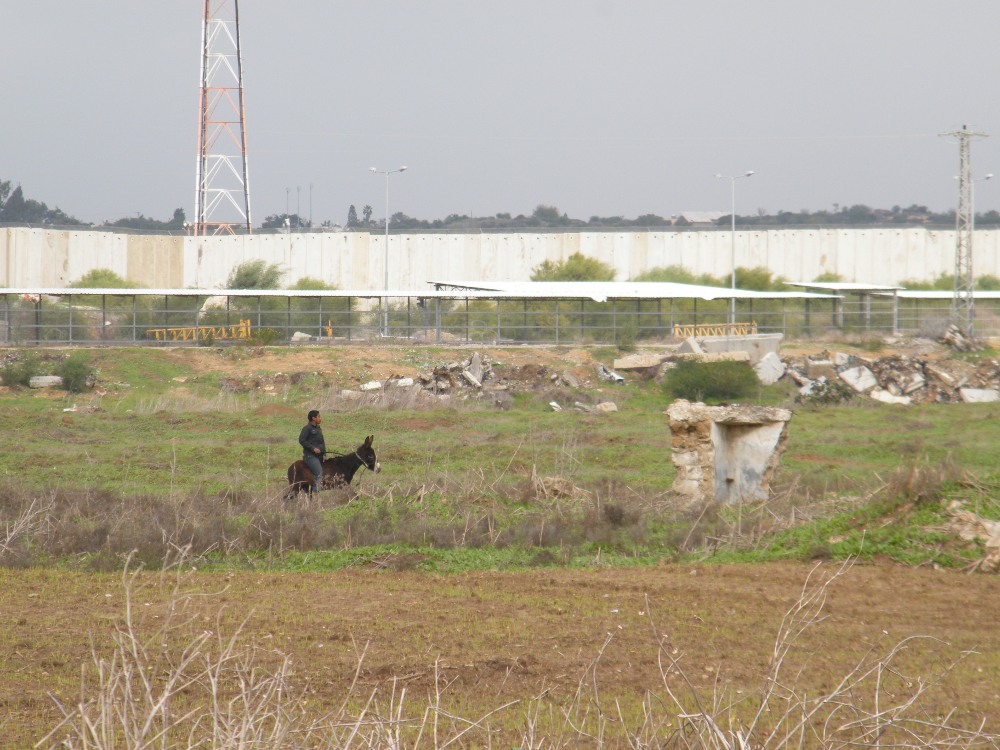
The Beit Hanoun (Erez) checkpoint in the northern Gaza Strip, which controls movement into Israel (Photo taken by the Beit Hanoun Local Initiative)
The development and effective functioning of health services in Gaza is further hampered by their isolation from the outside world. The siege makes it extremely difficult for health workers to receive training outside Gaza or to participate in conferences.
Maha Elbanna of PMRS told Corporate Watch: “Out of 110 staff, 2 have managed to train abroad – its also not easy for people to come here and train us – we are invited to participate but can’t make it because of the borders issue.”
The conditions of the siege also prevent Gaza’s health services from receiving foreign delegations, trainers and specialists and affect relationships with international donors. Several of the people we interviewed mentioned that their participation in international projects was jeopardised by their inability to attend meetings, and that project targets were also jeopardised due to the restrictions placed on them by the shortage of electricity and difficulty acquiring equipment.
Doctor Sultan of UHWC told us:
“Our endoscopic project is due to end on 13 November 2013, but the equipment has still not been delivered. We are asking the donors to extend the project in order for the equipment to come through Erez. Another project was through the World Bank; it was due to be delivered in 2008 but actually delivered in 2010. This damages our relationship with large international donors.”
Water, an existential threat
90% of groundwater from Gaza’s aquifer is not safe to drink without treatment and most Palestinians in Gaza do not have access to clean water. Most, if not all, tap water in Gaza is undrinkable. This is because the aquifer has been polluted by seawater, which in turn has been tainted with raw sewage. 90 000 cubic metres of raw sewage is currently pumped into the Mediterranean Sea off the coast of Gaza due to a lack of proper sewage infrastructure. According to the UNWRA, the “water crisis is an existential threat to the Gaza Strip as a liveable place.”[16]
The water crisis in Gaza is, in part, an effect of the occupation and siege of the Strip. In 2009 the Israeli military bombed a wall of one of the raw sewage lagoons of the Gaza Waste Water Treatment Plant, “which caused the outflow of more than 200 000 cubic metres of raw sewage onto neighbouring farmland.”[17]
The conditions of the siege prevent the development of solutions to the water crisis. Since the conflict between Hamas and Fatah in 2007, in which Hamas took control of the Strip, Israel has tightly controlled the entry of construction materials. This prevents the rebuilding of water infrastructure destroyed in Israeli attacks. According to Tarek Rabbad from the Ministry of Economics in Gaza, “there have been many attacks and we would need 3200 tonnes of steel, 6500 tonnes of iron and 10 000 tonnes of stone daily for 3 to 5 years to rebuild everything [i.e. everything destroyed by Israeli attacks, not just infrastructure]”.[18]
The boycott of the Hamas government by the US and EU means that even less funds are available for rebuilding and make it unlikely that sanitation infrastructure will be improved quickly enough to avert the crisis deepening. Although UNWRA claims that it will launch some projects to recharge the acquifer with run-off water and improve the water distribution network, it is clear that the crisis is unlikely to be solved before there is an end to the siege.
Dr Sultan of UHWC told us that the daily pumping of sewage into the sea and the consequent effect on drinking water means that “diarrhea, gastritis, colitis, parasitic diseases and gastroenterological illnesses are on the rise. 1 child in 10 suffers from water borne diseases due to contamination by sewage.” Because of the lack of clean water “we have a well at Al Awda and filter the water in the hospital. The water filter requires power to run, increasing the running costs of the service.”
According to the MAIA Project, a Palestinian NGO based in Gaza, contamination of the aquifer by seawater has caused high levels of chloride, which can result in “kidney disease, heart failure, neurological symptoms, lethargy and high blood pressure”. The seepages of waste water into the aquifer, as a result of inadequate sanitation infrastructure, cause high levels of nitrate, linked to a “life threatening disease called methemoglobinemia or ‘Blue Baby Syndrome’.”[19]
The people of Gaza, unable to travel outside due to the military blockade, have to deal with this crisis. Those who can afford it buy bottled water or use purifiers where they are available. However, bottled water and purification equipment must be imported through the Karam Abu Salem crossing from Israel. UNWRA also sources its construction materials from Karam Abu Salem and often purchases from Israeli companies.[20] Thus, the Israeli economy benefits from the water crisis perpetuated by its ongoing siege.
Resisting the siege through boycott
The health workers we spoke to are working under conditions which are made unbearable because of Israel’s continued military assault, the Israeli occupation, and the siege imposed by Israel with the assistance of the United States, the European Union and the Egyptian government. As detailed above, the conditions of the siege leave ample opportunity for the Israeli economy to profit, and make it impossible for health workers in Gaza to provide proper treatment to their patients without sending their patients to be treated in Israel.
They must purchase medicines from Israeli companies and obtain equipment and drugs through the Karam Abu Salem crossing from Israel. Despite this, the health workers we interviewed were uniformly enthusiastic about the movement for boycott, divestment and sanctions against Israel and had many ideas for how people outside Gaza could take action.
All of the health workers that we spoke to told us that their organisations had a policy of boycotting Israeli medicines except where they needed that medicine in order to protect life and were not able to procure it from another source.
Dr El Farra of PRCS told us that “the policy of our organisation is to buy from local organisations, even if Israeli products are cheaper, but of course we can’t rely completely on ourselves. We buy Israeli medicines if they are needed to protect life. We buy heart disease, diabetes and renal dialysis drugs from Israel as Arab companies don’t produce them.”
Dr Zaqout of PMRS said: “We don’t buy Israeli equipment and it is a policy to boycott Israeli products in PMRS.” The Ministry of Health told us that it has begun to try to deal with the problem by “buying drugs from European and Islamic countries,” rather than Israel. It also tries to bring international delegations of health workers to Gaza and encourages aid convoys of drugs to break the siege.
When asked about the international campaign for a boycott of the Israeli Medical Association, Dr Zaqout of PMRS told us:
“The boycott of the Israeli Medical Association is a good thing. Not particularly because of the IMA itself but because of a boycott’s potential effect on Israeli policies. If they see that there is a growing campaign in Europe maybe they will think twice about launching new military operations in Gaza.”
Dr El Farra told Corporate Watch:
“The growing of the BDS movement is a strong way of resisting the injustice that has been imposed on Palestinian people for decades. As physicians, our role goes beyond medical services, so it is important and crucial to remind all health workers and pharmaceutical companies to join the campaign of boycotting companies that have strong economical ties with Israel. Teva is an example here.”
The healthworkers we spoke to were in favour of a boycott of Teva, the largest Israeli pharmaceutical company and the largest company on the Tel Aviv Stock Exchange. Teva operates in 60 countries globally and is the world’s largest supplier of generic drugs.
Dr Sultan of UHWC told us: “It’s very important to raise awareness about these companies. We have experience of working with friends in Belgium who are asking doctors there not to write prescriptions for Teva. If we had a choice we would not purchase from Teva. We don’t have a choice but we support the international campaign.”
According to Dr Zaqout: “By buying Teva you are making the Israeli economy stronger and therefore making the settlements stronger.
Take action
BDS campaigners across Europe[21] are intensifying campaigns to boycott Teva. There is a counter-argument that campaigners should be careful in targeting the manufacturers of drugs used to treat sick people. However, there is also a need to treat the greater illnesses of military occupation and colonialism. What makes boycotting Teva easier is that it generates the bulk of its revenue through generic medicines, which can easily be supplied by other manufacturers.
Teva UK claims that it provides 1 in 6 prescriptions supplied on the NHS. The first goal in the UK should be persuading doctors and pharmacists that people are not happy with being prescribed generic medicines made by Teva. BDS campaigners, when given Teva generics, could ask for alternatives and explain to the pharmacy why they are making this choice.
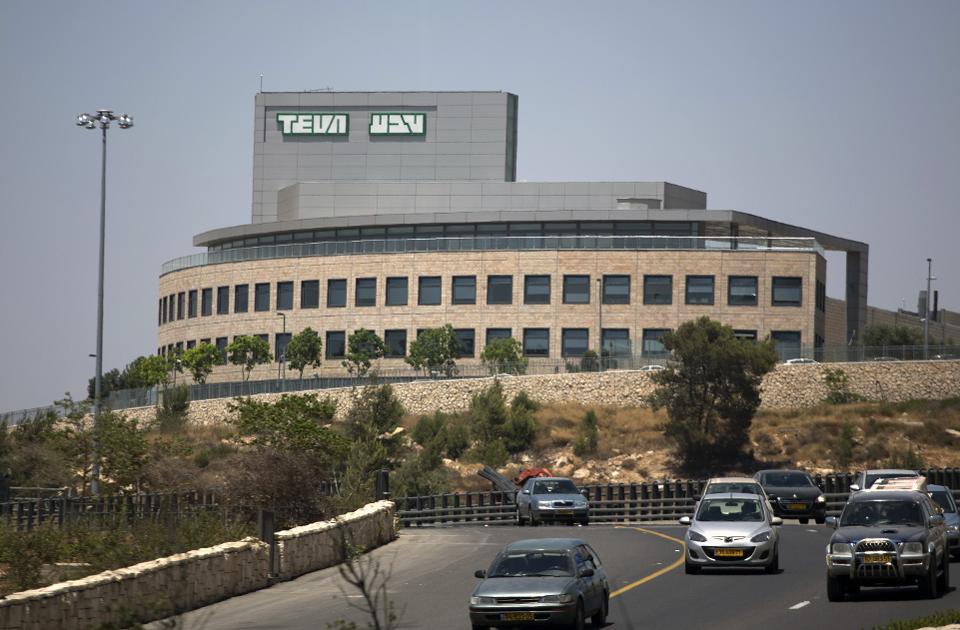
Teva’s premises in Israel
Teva has five main locations in the UK: a distribution centre in West Yorkshire, offices in Harlow, a packaging operations facility in Eastbourne and a manufacturing facility in Runcorn.
To find out more about the UK Teva campaign see https://www.facebook.com/pages/Stop-TEVA-from-bleeding-the-NHS-and-the-Palestinian-People/443392919113731
For the French campaign against Teva see europalestine.com
To read more about the Israeli pharmaeutical industry, check out Corporate Watch’s book, Targeting Israeli Apartheid, pages 169-178 and the excellent report by Who Profits?: Captive Economy: The pharmaceutical industry and the Israeli occupation.
Another way to act in solidarity with health workers in Gaza is to support calls for the Israeli Medical Association’s expulsion from the World Medical Association over its complicity in Israeli militarism and apartheid. For more details see boycottima.org
Notes
1. See Who Profits? Dor Alon – http://whoprofits.org/company/dor-alon. Paz – http://whoprofits.org/company/paz-oil, Ferrara and Rabinowitz, Gaza’s Gas (2013) – http://whoprofits.org/content/gazas-gas-eu-millions-smoke-cecilia-ferrara-assia-rabinowitz-hagar-shezaf. Ynet (2012) Paz extends PA gas supply deal – http://www.ynetnews.com/articles/0,7340,L-4235207,00.html
2. Corporate Watch, interview with Dr Tayseer Sultan and Haneen Wishah (UHWC), carried out in Gaza City on 12/11/13
3. Corporate Watch, interview with Maha Elbanna and Dr Bassem Zaqout, Project Coordinator at the Gaza Palestine Medical Relief Service, 18/11/13
4. Corporate Watch, interview with Mona El Farra, Board of Directors (Deputy Chair), Palestinian Red Crescent Society, carried out in Gaza City on 10/11/13
5. Corporate Watch, interview with Dr Ashraf Al Qedra, Director of Media Relations at the Palestinian Ministry of Health, 26/11/13
6. ICRC (2009) – http://www.icrc.org/eng/resources/documents/update/palestine-update-010109.htm
7. Anti-personnel shells generally fired from a tank. The shell explodes in the air and releases thousands of metal darts
8. Al Mezan human rights centre (in personal correspondence with Corporate Watch, February 2014) told us that “Arafat Hani Abd Al Dayem worked as paramedic volunteer in UHWC, killed on 4/1/2009 while working on ambulance. He was killed by artillery shell”
9. Corporate Watch, interview with Tamer Mahmoud Al Zweidi, Ministry of National Economics, carried out in Gaza City on 25/11/13
10. The Al Mezan Centre for Human Rights record of the action incident says: “At approximately 7:05 am on Monday 6 November 2006, an Israeli drone fired a missile targeting a group of students near Al Sheikh Zayed crossroads opposite Jabaliya Youth Club. The students were on their way to school, which is 700 metres away from the place of attack. As a result, Ramzi Al Shrafi, 16, was killed and other six students were injured.” (Correspondence with Corporate Watch, February 2014)
11. Corporate Watch, interview with Mohammed Azzam, carried out in Gaza City, 18/11/2013
12. A list of these products can be found at Who Profits, Captive Economy: The pharmaceutical industry and the Israeli occupation (March 2012) – http://www.whoprofits.org/content/captive-economy-pharmaceutical-industy-and-israeli-occupation page 67
13. Corporate Watch, anonymous interview with worker from MSS, carried out in November 2013
14. Who Profits (March 2012), Captive Economy: The pharmaceutical industry and the Israeli occupation – http://www.whoprofits.org/content/captive-economy-pharmaceutical-industy-and-israeli-occupation
15. See Ferrara and Rabinowitz, Gaza’s Gas (2013), Ibid
16. UNWRA (May 2013), Gaza in 2020 – http://www.unrwa.org/userfiles/file/publications/gaza/Gaza%20in%202020.pdf page 12
17. UN (2009), Report of the United Nations Fact Finding Mission on the Gaza Conflict, executive summary – available at http://ap.ohchr.org/documents/dpage_e.aspx?si=A/HRC/12/48, page 22
18. Corporate Watch, interview with Tarek Rabbad, Ministry of Economics, carried out in Gaza City on 28/11/13
19. The MAIA Project, Middle East Children’s Alliance (2013) – http://www.mecaforpeace.org/projects/maia-project
20. Corporate Watch, interview with workers for UNWRA who we have chosen not to name, Rafah, carried out in December 2013
21. See http://www.europalestine.com/spip.php?article3942&lang=fr and http://palsolidarity.org/2010/05/bds-action-against-israeli-pharmaceutical-company-at-cosmofarma-expo/ for links to campaigns and calls to action

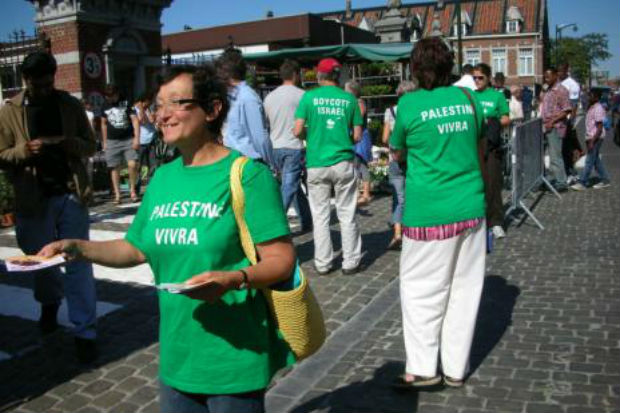
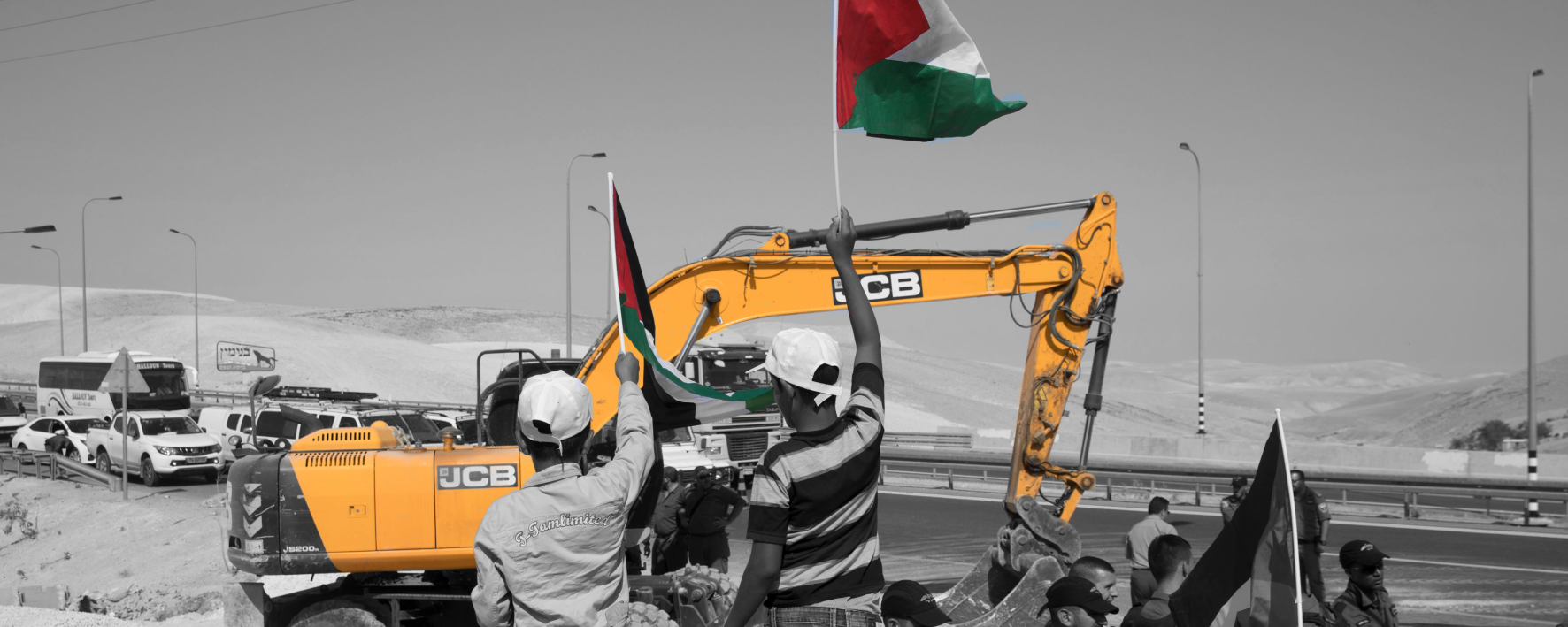
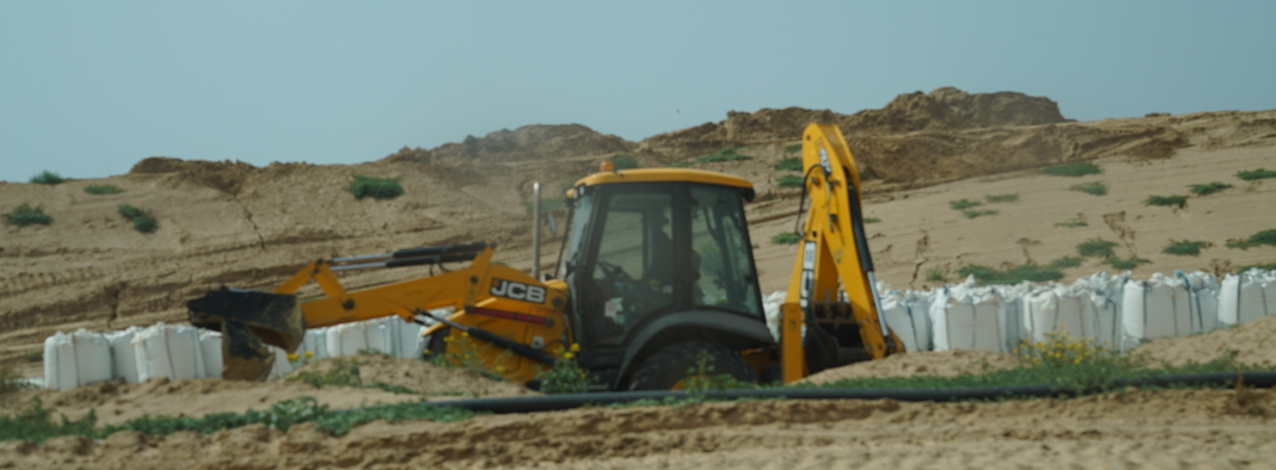
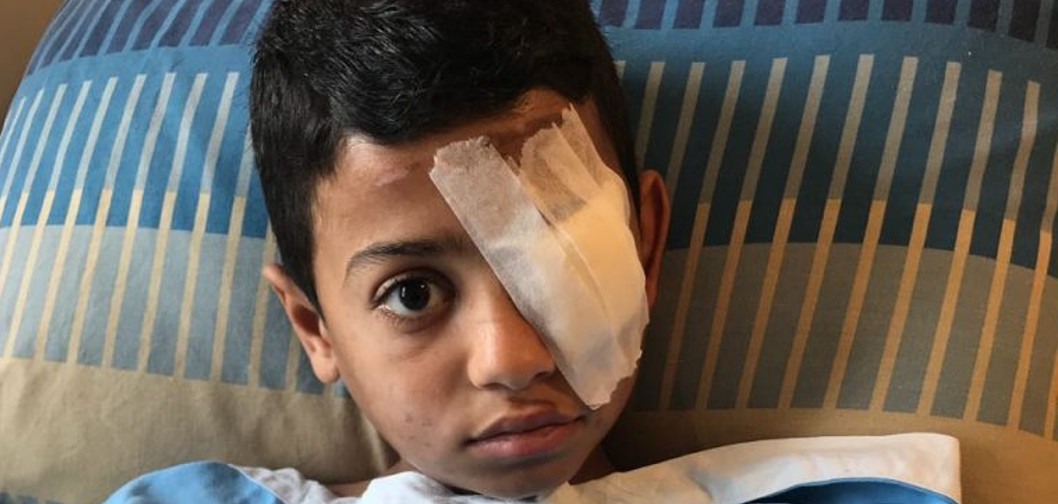
10 Comments
Sue · 20th February 2014 at 1:48 pm
Absolutely brilliant research and reporting. It’s as thorough as can be. I knew about Teva, but didn’t have the names of the other companies. Thank you so much.
New Briefing – Besieging health services in Gaza: a profitable business | International Solidarity Movement · 19th February 2014 at 12:00 pm
[…] February 2014 | Corporate Watch, Tom Anderson and Therezia Cooper | Gaza, Occupied […]
Besieging health services in Gaza: a profitable business | Sabbah Report · 21st February 2014 at 12:30 pm
[…] Corporate Watch’s new briefing exposes how the Israeli economy profits from the siege of health services in Gaza and highlights calls from Palestinian health workers to boycott Israeli pharmaceutical companies. […]
Israeli companies profiting from Gaza siege | khamakarpress.com · 24th February 2014 at 8:44 pm
[…] You can read the whole report on the Corporate Occupation website. […]
Israeli companies profiting from Gaza siege | Kia Ora Gaza · 25th February 2014 at 3:30 am
[…] You can read the whole report on the Corporate Occupation website. […]
Blackouts – Gaza in darkness | Paramedics In Gaza · 17th March 2014 at 8:52 am
[…] generators, it provides unreliable electricity which damages expensive medical equipment. In the excellent Corporate Watch report on Gaza from February 2014, a doctor spoke of an incident this winter where the generators failed at Al […]
Al-Shifa hospital – largest Emergency Dept in Gaza (Pt 1) | Paramedics In Gaza · 30th March 2014 at 3:40 am
[…] many similar stories if you read more about the health care system in Gaza – you could start with this report which was written by pros rather than a paramedic trying to string a sentence together without […]
Al Shifa Emergency Department – largest in Gaza (part 1) | Defend the Rescuers · 2nd April 2014 at 2:27 pm
[…] many similar stories if you read more about the health care system in Gaza – you could start with this report which was written by pros rather than a paramedic trying to string a sentence together without […]
Profiting from besieged health services in Gaza | AUSPalestine · 12th May 2014 at 9:16 am
[…] read more about the Israeli pharmaeutical industry, check out Corporate Watch’s book, Targeting Israeli Apartheid, pages 169-178 and the excellent report by Who Profits?: Captive Economy: The pharmaceutical […]
Boycott, Divestment and Sanctions in Gaza: empowering action | Corporate Watch · 23rd July 2014 at 9:29 pm
[…] our time in Gaza, we talked to everyone we met about BDS: Health Workers, Farmers and fisher folk, students at several different universities, community groups, unions and […]